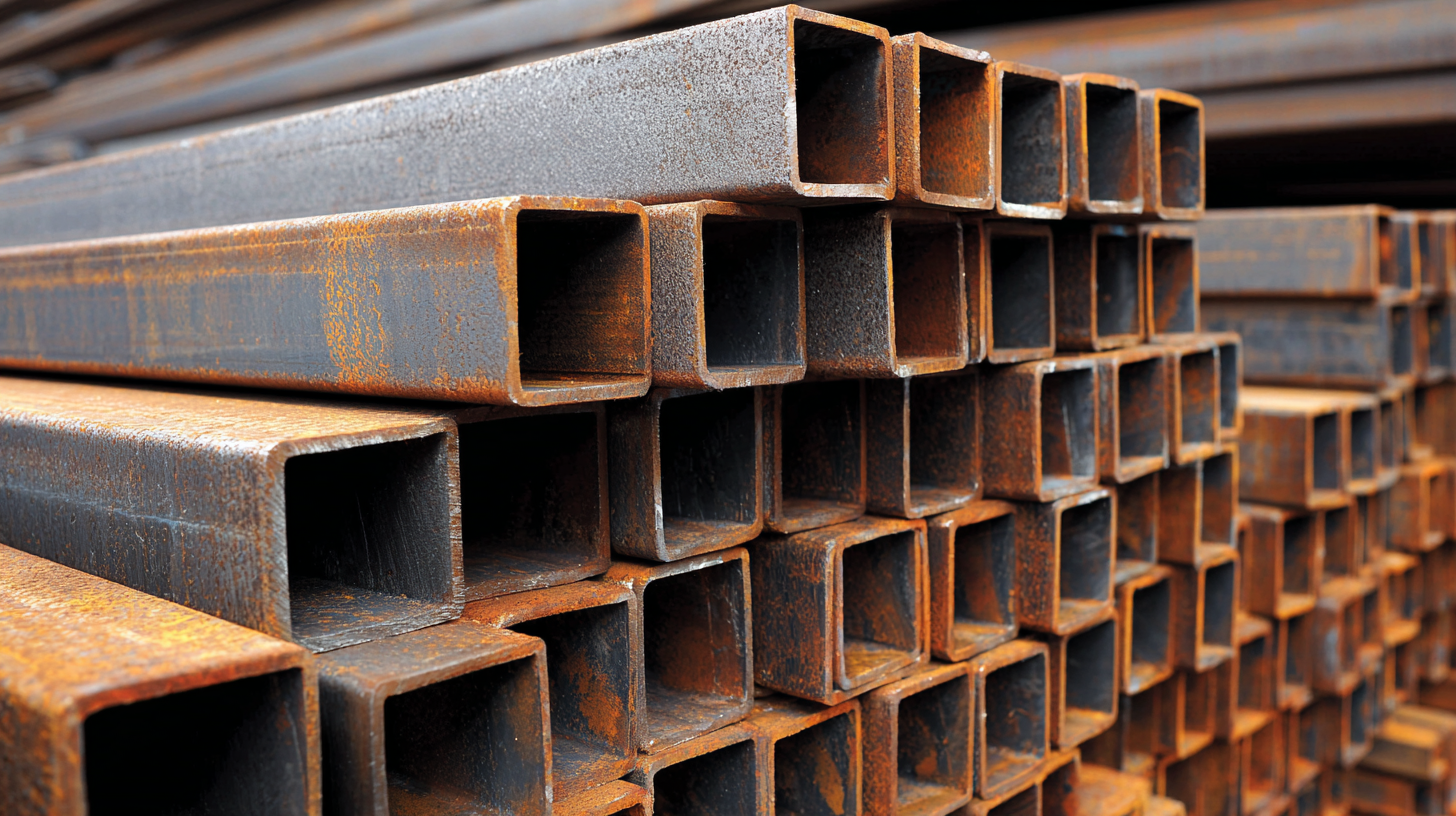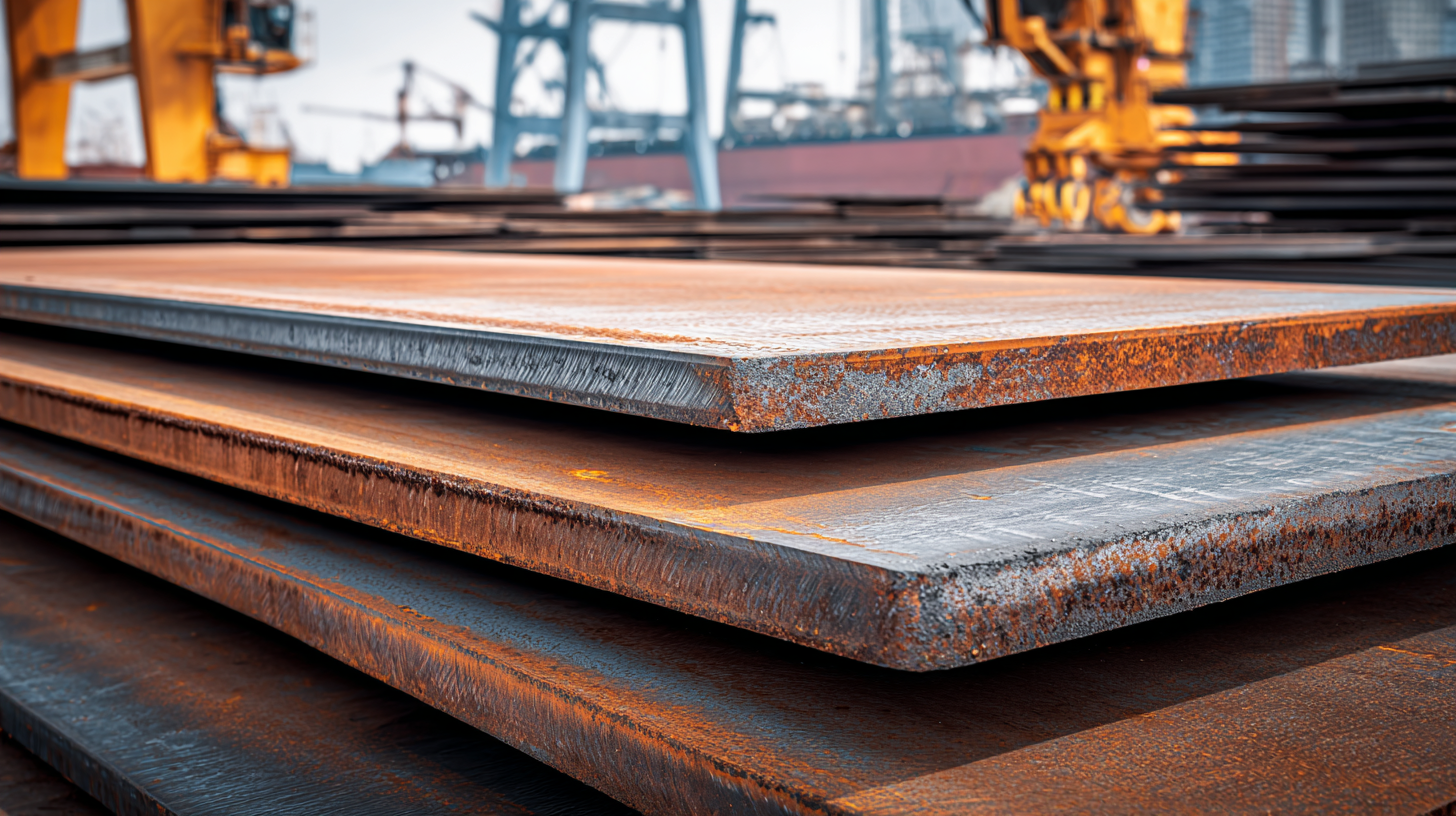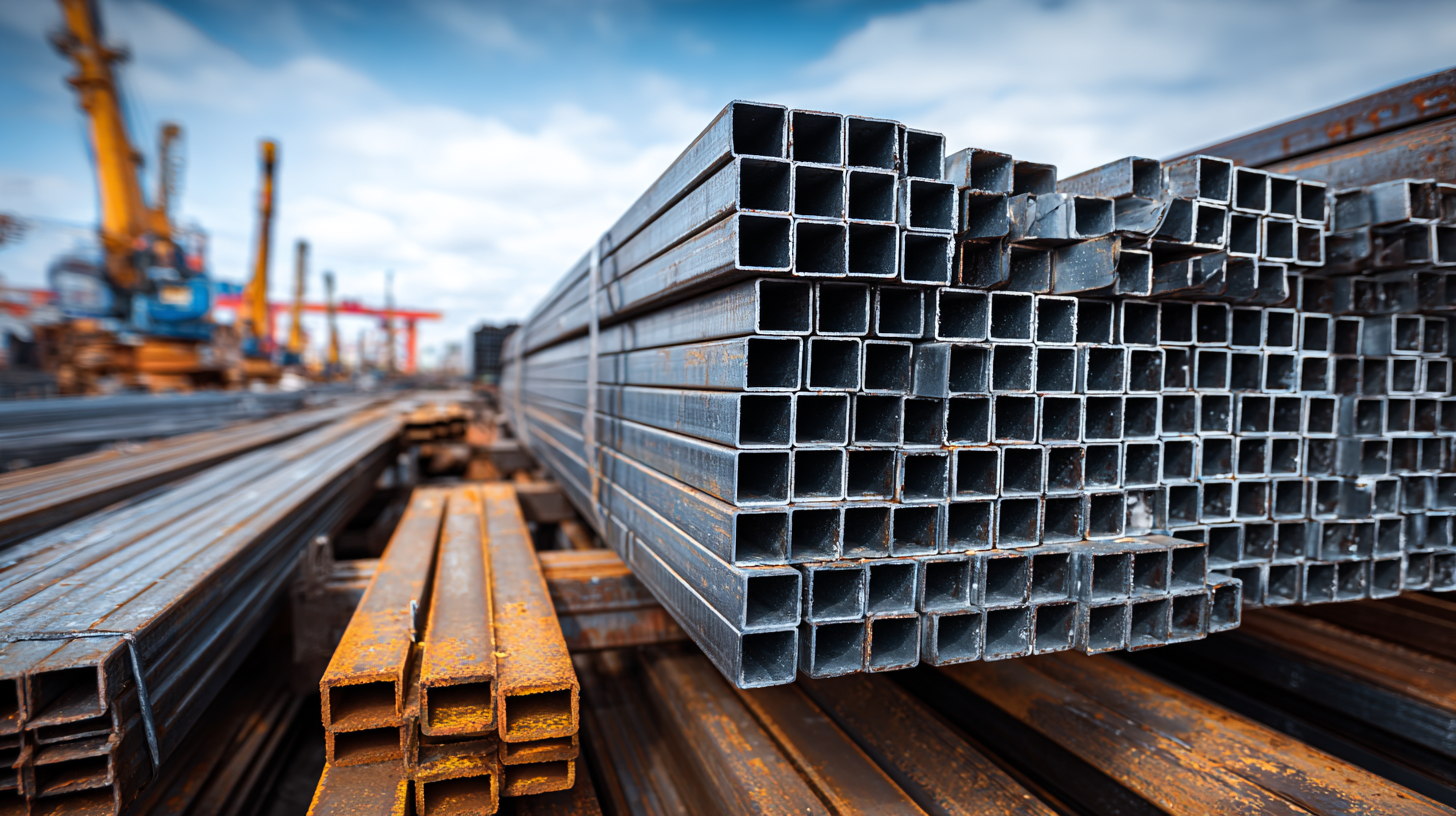
In the competitive landscape of industrial manufacturing, the quality of materials such as industrial steel plays a pivotal role in the success of any project. According to the World Steel Association, global steel production reached approximately 1.87 billion tonnes in 2021, highlighting the immense demand for superior quality steel in various industries. With such a vast market, choosing the right manufacturer becomes critical not just for compliance but also for ensuring durability and performance.

Proper export certifications not only signify adherence to international standards but also reinforce the credibility of the manufacturer. This guide aims to assist businesses in navigating the complex landscape of export certifications and provide insights on selecting top-tier industrial steel manufacturers, ensuring that every project benefits from the best materials available.
In the highly regulated landscape of the steel industry, export certifications play a critical role in ensuring product quality and compliance with international standards. According to a report by the World Steel Association, over 1,500 million tonnes of crude steel were produced globally in 2021, with a significant portion designated for export. As companies seek to penetrate foreign markets, possessing the appropriate certifications is paramount for meeting the stringent safety and quality benchmarks mandated by countries such as those in the European Union and the United States.

Moreover, the absence of recognized export certifications can lead to substantial setbacks. A study by MarketsandMarkets highlights that companies lacking compliance risk approximately 15% to 25% of their potential market share in the export sector. Certifications such as ISO 9001, ASTM, and CE marking not only facilitate easier access to international markets but also instill confidence in buyers regarding the integrity and reliability of the steel products. As the global demand for high-quality steel continues to rise, understanding and obtaining the necessary export certifications has become a strategic imperative for companies aiming to thrive in this competitive arena.
When choosing industrial steel for export, understanding key specifications is crucial for ensuring quality and compliance with international standards. One of the most important specifications to consider is the steel grade, which dictates the material's chemical composition and mechanical properties. According to the World Steel Association, high-strength low-alloy (HSLA) steel grades like ASTM A992 and A572 are increasingly favored in construction projects due to their superior strength-to-weight ratio and resistance to corrosion,
making them suitable for various structural applications.
Another critical specification is the steel's thickness and treatment process. The American Iron and Steel Institute (AISI) emphasizes that thicker materials often exhibit greater durability but may require special handling during shipping and processing. Heat treatment techniques, such as quenching and tempering, can further enhance the properties of steel, improving its toughness and wear resistance. Exporters must therefore assess the provider’s compliance with ASTM and ISO standards to ensure the material meets specific requirements tailored to their applications, ultimately leading to a more successful operation in competitive markets.
Navigating the complexities of regulatory standards for global steel export can be daunting, but it is essential for businesses looking to thrive in international markets. The global steel industry is projected to reach a market value of approximately $1 trillion by 2025, according to a report by Mordor Intelligence. Compliance with international and regional standards, such as ISO certifications and ASTM standards, is crucial for ensuring quality and safety in steel products. In addition, companies must stay abreast of changing regulations from bodies like the European Union and the World Trade Organization, which can significantly impact export processes and market access.
**Tips:** Make sure to research the specific regulations of your target export markets. Countries may have unique requirements that influence which certifications your steel products need to obtain. It’s also wise to conduct regular audits of your supply chain partners, ensuring that they are compliant with the latest standards, which fosters trust and transparency.
Moreover, investing in the right certifications not only bolsters your reputation but can also reduce costs associated with non-compliance. A study by the World Steel Association noted that companies with certifications in place faced up to 30% lower risks in export operations. Thus, understanding and adhering to the appropriate regulatory standards is not just a requirement but a strategic advantage in the competitive steel marketplace.
This bar chart illustrates the global compliance demand percentages for various industrial steel standards. Understanding the regulatory standards is crucial for navigating export certifications effectively.
When navigating the complex world of export certifications for industrial steel, selecting the right certification bodies is critical to ensuring quality assurance. Various international standards, such as ISO 9000, outline essential quality management systems that businesses must adhere to for global trade. According to industry reports, organizations that implement ISO 9001 quality management systems have experienced up to a 30% increase in operational efficiency. Thus, partnering with accredited certification organizations can significantly bolster your company's reputation and efficiency.
Furthermore, understanding the distinctions between different certification paths is vital. For example, the Six Sigma certification, a globally recognized benchmark, emphasizes process improvement and quality management. Its methodologies have been linked to cost reductions of up to 25% in project implementations. Additionally, recent trends indicate that certifications tied to specific sectors, such as construction or cybersecurity, are increasingly important in promoting compliance with evolving safety and regulatory requirements. By choosing the right certification bodies, businesses can not only meet necessary standards but also leverage these certifications to improve overall operational resilience.
| Certification Body | Certification Type | Applicable Standards | Key Industries | Processing Time (Days) |
|---|---|---|---|---|
| International Organization for Standardization (ISO) | ISO 9001 | Quality Management Systems | Manufacturing, Construction | 30 |
| American Society for Testing and Materials (ASTM) | ASTM A36 | Structural Steel Standards | Construction, Fabrication | 45 |
| European Committee for Standardization (CEN) | EN 10025 | Hot-rolled Products of Structural Steels | Construction, Automotive | 60 |
| British Standards Institution (BSI) | BS 5950 | Steelwork Design | Construction, Engineering | 40 |
| Canadian Standards Association (CSA) | CSA G40.21 | Structural Quality Steel | Construction, Manufacturing | 35 |
In the steel manufacturing industry, ensuring compliance with export certifications is paramount. Best practices begin with a thorough understanding of the regulatory frameworks that govern steel products in various markets. Manufacturers must stay informed about the specific standards required by different countries, such as ASTM, ISO, and EN certifications. This knowledge not only helps in producing compliant products but also streamlines the export process by minimizing delays and potential rejections at customs.

Another crucial aspect is the implementation of a robust quality management system (QMS). A well-structured QMS enables manufacturers to consistently produce steel products that meet international standards. Regular internal audits and staff training on compliance requirements can further enhance a company’s ability to uphold quality standards.
Collaborating with export certification bodies can also provide valuable insights and guidance, ensuring that all products not only meet but exceed compliance standards. By prioritizing these best practices, manufacturers can enhance their reputation in the global market while ensuring the timely delivery of high-quality industrial steel.